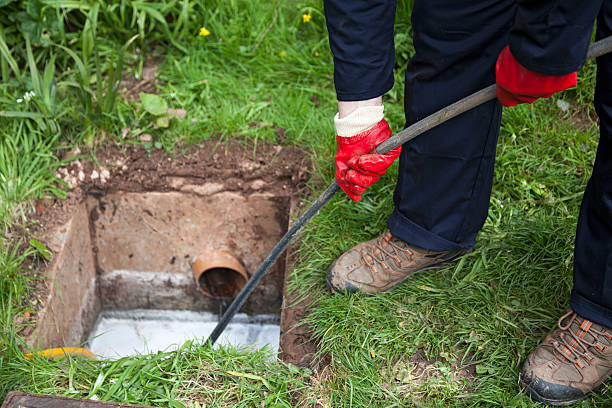Lot clearing is a critical step in preparing a piece of land for construction, landscaping, or other development projects. Whether you’re looking to build a new home, expand your commercial property, or create a recreational space, understanding the process of lot clearing in San Jose CA is essential. In this guide, we will cover everything from the reasons for lot clearing to the techniques and equipment involved, as well as the environmental considerations and frequently asked questions.
What is Lot Clearing?
Lot clearing involves the removal of trees, shrubs, rocks, and debris from a piece of land to prepare it for future use. This process not only enhances the aesthetics of a property but also makes it safer and more functional for construction or landscaping projects. Depending on the size and condition of the lot, clearing can range from simple debris removal to extensive excavation work.
Why is Lot Clearing Important?
Preparation for Construction
Before any construction can begin, the land must be cleared to ensure a stable foundation. Removing unwanted vegetation and debris helps in laying the groundwork for buildings, roads, and other structures.
Enhancing Property Value
A well-maintained and cleared lot can significantly increase the value of the property. Potential buyers or investors are more likely to be interested in a lot that is visually appealing and ready for development.
Safety and Accessibility
Overgrown lots can pose safety hazards, including the risk of fire and the presence of hazardous materials. Clearing the lot improves accessibility for construction vehicles and personnel, ensuring a safer working environment.
Environmental Management
Proper lot clearing can help in managing the local ecosystem. By selectively removing invasive species and promoting native plants, you can enhance the natural habitat and maintain biodiversity.
The Lot Clearing Process
Initial Assessment
Before starting the lot clearing process, it’s crucial to conduct a thorough assessment of the property. This includes identifying any obstacles, such as large trees, rock formations, or existing structures. Understanding the topography and soil conditions will also inform the clearing strategy.
Planning and Permits
Depending on local regulations, you may need to obtain permits before clearing your lot. This step is essential for ensuring compliance with zoning laws and environmental protections. It’s advisable to consult with local authorities or a professional lot clearing service to understand the requirements in your area.
Clearing Techniques
Lot clearing can be performed using various techniques, depending on the size of the area and the density of vegetation:
- Manual Clearing: For small lots or areas with minimal vegetation, manual clearing can be effective. This involves using hand tools like chainsaws, axes, and brush cutters to remove trees and shrubs.
- Mechanical Clearing: For larger areas, heavy machinery such as bulldozers, excavators, and tree mulchers are commonly used. These machines can quickly and efficiently clear large volumes of vegetation and debris.
- Controlled Burning: In some cases, controlled burns may be permitted to remove underbrush and debris. However, this method requires careful planning and compliance with local fire regulations.
Stump Removal
After clearing trees, it’s important to address the stumps left behind. Stump removal can be done using a stump grinder, which grinds the stump down below ground level, or by manual extraction for smaller stumps. Leaving stumps can lead to pest infestations and hinder future landscaping efforts.
Site Cleanup and Grading
Once the lot is cleared and stumps are removed, the next step is site cleanup. This includes removing any remaining debris, rocks, and unwanted materials. After cleanup, grading may be necessary to level the land and prepare it for construction or landscaping.
Environmental Considerations
Habitat Preservation
When clearing a lot, it’s important to consider the impact on local wildlife habitats. Some areas may contain protected species or ecosystems that should be preserved. A professional lot clearing service can help assess the ecological implications of the project.
Erosion Control
Clearing land can lead to soil erosion, especially on sloped properties. Implementing erosion control measures, such as silt fences or planting cover crops, can help protect the soil and prevent runoff during heavy rains.
Waste Management
Proper disposal of cleared materials is essential. Recycling and composting options should be explored to minimize environmental impact. Many lot clearing services offer eco-friendly disposal methods, ensuring that debris is managed responsibly.
Frequently Asked Questions (FAQs)
How much does lot clearing cost?
The cost of lot clearing varies depending on factors such as the size of the property, the density of vegetation, and the method used. On average, homeowners can expect to pay between $1,500 and $5,000 for a standard lot clearing service.
Do I need a permit for lot clearing?
In many cases, permits are required for lot clearing, especially in urban areas or when working near protected ecosystems. Check with your local zoning office to determine what permits are necessary for your project.
How long does the lot clearing process take?
The duration of the lot clearing process depends on the size of the property and the complexity of the clearing required. Small lots may take a few days, while larger, more complex areas can take several weeks to complete.
Can I clear my lot myself?
While it’s possible to clear a small lot yourself, it’s advisable to hire a professional lot clearing service for larger projects. They have the necessary equipment, expertise, and knowledge of local regulations to complete the job safely and efficiently.
What should I do after clearing my lot?
After clearing your lot, consider the next steps for development or landscaping. This may involve grading the land, planting new vegetation, or beginning construction. It’s essential to plan carefully to ensure a successful outcome.
Conclusion
Professional lot clearing is an essential process for anyone looking to develop or enhance a piece of land. By understanding the importance of lot clearing, the methods involved, and the environmental considerations, you can ensure a successful project. Whether you choose to tackle the clearing yourself or hire a professional service, proper preparation and planning are key to achieving your goals.







